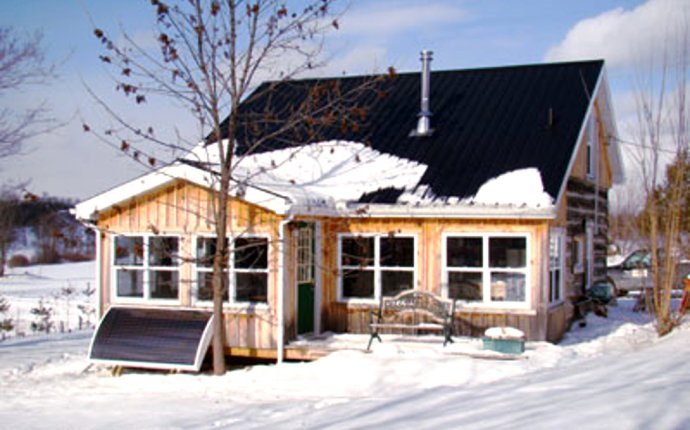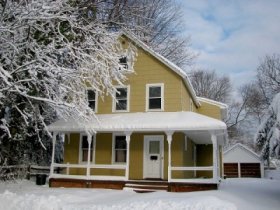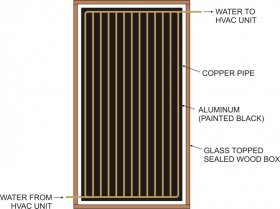
solar heating systems for homes
 Solar power is a hot topic these days. With energy costs increasing and expected to keep on increasing, many are seeing solar power as the way to go. While expensive, it’s possible to add solar power to pretty much any home. But adding solar heating isn’t always all that easy, especially when that home wasn’t designed with solar in mind.
Solar power is a hot topic these days. With energy costs increasing and expected to keep on increasing, many are seeing solar power as the way to go. While expensive, it’s possible to add solar power to pretty much any home. But adding solar heating isn’t always all that easy, especially when that home wasn’t designed with solar in mind.
When most people talk about solar heated homes, they’re referring to passive solar heating. In a nutshell, passive solar works by the principle that dark colors absorb light. Since light is energy, the law of the conservation of energy tells us that the light must be converted to some other form of energy. This naturally occurs by converting the sunlight into heat. So, as long as a home is designed with enough windows, a good absorber and sufficient thermal mass, a passive solar heating system will work.
Unfortunately, not all homes lend themselves to passive solar heating. While many can be adapted to receive some benefit from passive solar, there are some with designs or locations that make it cost-prohibitive to modify them for passive solar.
That’s where active solar comes in. Active solar heating works under the same basic principle as passive solar. However, that’s about the end of their similarity. The major difference between the two is that an active solar system has an “active” element, which moves the heat from the collector and absorber to the thermal mass or directly into the home.
Although not as common as passive solar heating systems, designs for active solar systems are literally endless. Some go as far as to have a swimming pool in the basement of the home, to be used as a thermal mass. However, it is possible to design a simple active solar heating system that doesn’t bother with a thermal mass. While this would only provide heating in daylight hours, in many parts of the country, that would be a help.
 How the System Works
How the System Works
Most homes today have forced-air heating and cooling systems. There is an air handling unit which combines a blower, an evaporator for the air conditioning and either a burner (with natural gas) or an electric heating coil. This unit is the center of the home’s heating and cooling system, and it is controlled by a thermostat.
The solar collector to go on the roof should be as large as you can make it. If you can find a used sliding glass patio door for it, that would be ideal. Make a well-sealed wood box for the collector and use the glass patio door as the cover.
Inside the collector, you need a network of copper pipes to carry the water, as shown in the diagram. The top and bottom pipes can be 1/2 inch in diameter, as they will be functioning as manifolds. The vertical pipes between them should be 1/4 inch in diameter. Make the unit as flat as possible and attach sheet aluminum (aluminum flashing will work) to the back as an additional heat collector. Paint the entire thing black so that it will absorb the most light possible and mount it in the box.
It is important that the box be sealed to prevent moisture from getting into it. Putting some silica desiccant in the box to absorb any moisture at the time of assembly wouldn’t be a bad idea either. The water must enter from the bottom (downhill) of the unit and exit from the top of it.
The panel needs to be mounted on the roof of the house, pointed south, at the right angle to ensure that it captures the most sunlight this angle is dependent upon the latitude of the home:
- If the latitude is below 25o, the latitude needs to be multiplied by 0.87.
- If the latitude is above 25o, the latitude needs to be multiplied by 0.76, plus 3.1 degrees.
The resultant angle is the angle away from directly vertical that the panel should be mounted. The water supply pipes should then be routed to the HVAC air handling unit. Insulate the pipes to ensure that no heat is lost en route.
Okay, that’s the heat collector for your active solar heating system. The next part is creating a way for that heat to get into your home. To do this, we’re going to modify your existing air handling unit.
Most air handling units have extra unused space in them. This space is normally there for the addition of more heating coils. Some climates need a lot of heating coils in order to keep a home warm; but in most cases, they aren’t all installed. We can easily utilize that space for the active solar heating coil.









